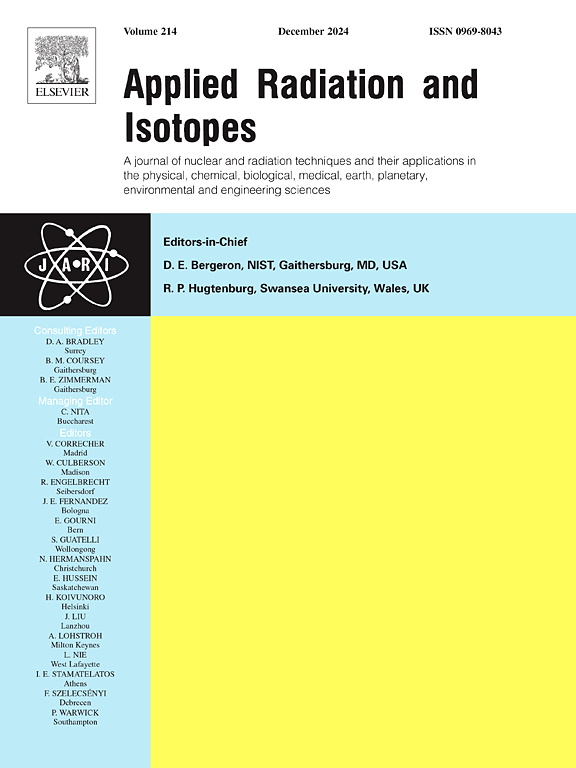Occupational radiation doses in eye lens and extremities during neonatal cardiac interventional procedures
IF 1.6
3区 工程技术
Q3 CHEMISTRY, INORGANIC & NUCLEAR
引用次数: 0
Abstract
The objective of this study was to evaluate the amount of radiation received by physicians during pediatric cardiology interventions in two health institutions in Recife, PE, Brazil. Twenty occupational doses were monitored under supervision during procedures performed on newborn patients using fluoroscopy systems. The doses to the lens of the eye indicated a higher average dose to the left eye, being 25 μSv/procedure in institution A and 47 μSv/procedure in institution B. The estimated annual dose according to the workload was 6 mSv in institution A and 11 mSv in institution, corresponding to about 30 % and 55 % of the annual limit, respectively. With respect to the doses in the extremities, the professionals in institution A presented an average of 240 μSv/procedure, while in institution B the average was 375 μSv/procedure. The interposition of the left hand to the primary radiation beam was observed in 65 % of the cases evaluated. This study concluded that it is essential to implement improvements in radiation protection practices to ensure the safety of health professionals involved in cardiac procedures in neonates.
新生儿心脏介入手术中晶状体和四肢的职业辐射剂量
本研究的目的是评估巴西累西腓两家卫生机构儿科心脏病干预期间医生接受的辐射量。在使用透视系统对新生儿患者进行手术的过程中,在监督下监测了20个职业剂量。对眼晶状体的平均剂量较高,a机构为25 μSv/次,b机构为47 μSv/次,按工作量估计的年剂量在a机构为6 mSv,在b机构为11 mSv,分别约占年限值的30%和55%。对于肢体的剂量,A机构的平均剂量为240 μSv/次,B机构的平均剂量为375 μSv/次。在评估的病例中,65%的病例观察到左手插入一次辐射束。这项研究的结论是,必须改进辐射防护措施,以确保参与新生儿心脏手术的卫生专业人员的安全。
本文章由计算机程序翻译,如有差异,请以英文原文为准。
求助全文
约1分钟内获得全文
求助全文
来源期刊

Applied Radiation and Isotopes
工程技术-核科学技术
CiteScore
3.00
自引率
12.50%
发文量
406
审稿时长
13.5 months
期刊介绍:
Applied Radiation and Isotopes provides a high quality medium for the publication of substantial, original and scientific and technological papers on the development and peaceful application of nuclear, radiation and radionuclide techniques in chemistry, physics, biochemistry, biology, medicine, security, engineering and in the earth, planetary and environmental sciences, all including dosimetry. Nuclear techniques are defined in the broadest sense and both experimental and theoretical papers are welcome. They include the development and use of α- and β-particles, X-rays and γ-rays, neutrons and other nuclear particles and radiations from all sources, including radionuclides, synchrotron sources, cyclotrons and reactors and from the natural environment.
The journal aims to publish papers with significance to an international audience, containing substantial novelty and scientific impact. The Editors reserve the rights to reject, with or without external review, papers that do not meet these criteria.
Papers dealing with radiation processing, i.e., where radiation is used to bring about a biological, chemical or physical change in a material, should be directed to our sister journal Radiation Physics and Chemistry.
 求助内容:
求助内容: 应助结果提醒方式:
应助结果提醒方式:


